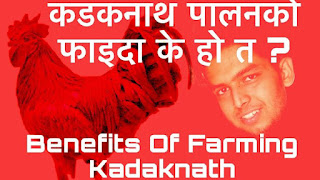Latest Posts
Are We Aware Of What Dairy Animals Suffers?
Dairy farming is continuously standing with millions of lives
Knowing this all .. are we unknown of what they are going through?,
Cows in the dairy industry suffer their entire lives. From the moment they enter this world they are treated like commodities.
Just like humans, cows only produce milk for their offspring. Therefore, they are forcefully impregnated every year. A female and her offspring are forced through a cycle of cruelty that ends with their slaughter.
Much like humans, cows have strong maternal instincts but a mother’s bond with her calf has no place on factory dairy farms. Shortly after birth, calves are dragged away from their mother never to be seen again. A cow will have to go through this painful process every year of her life. The milk she produces for her calf is instead taken from her and sold to consumers.
After being torn away from their mothers, calves will spend much of their lives in extreme confinement. In fact, most will spend the first 2 to 3 months of life confined in lonely barren hutches, fed a diet of milk replacer while humans drink the milk intended for them.
Painful Manipulations are operated ..
Cows in the dairy industry face the same fate as those in the meat industry. They are killed when their milk production declines. No cow is allowed to live out their natural lifespan of up to 25 years. In fact, 20% of the beef sold in stores comes from cows who were exploited by the dairy industry.
After being transported long distances cows are forced into stun boxes. Inside these chambers, they are shot in the head, a process meant to render them unconscious. However, many are still conscious when they have their throats slit.
"Caponization"
Caponization is a surgical removal of testes from a rooster in order to improve the quality of carcass and meat . The testes are removed during this process with the help of surgical equipment and a trained technician. It may sound little odd to many of the people but Caponization is still in practice in countries like China, Nepal.
When this is done the bird can grow longer, gets larger and can also be used as a broody as their hormones are now that of a hen's.
There are two types of Caponization
1. Surgical Caponization
2. Chemical Caponization (Payne and Wilson 1999).
Manual Removal of Testes in Roosters
Equipment's Required
· Surgical Blade
· Disinfectant
· Gloves
· Forceps
· Suture thread
· Suture needle
· Scissors
· Betadine ( Povidone Iodine)
How is Caponization performed in rooster?
At first restrain the rooster to be caponized properly. With the help of the scissor trim down the feathers from the vent to caudal of chest bone. Clean the area with the disinfectant available and after that start penetrating the mid ventral region in between vent and chest bone. Be safe no to cut nerves, make a cut so that max. two fingers can be taken inside the abdomen. Softly palpate by finger to find testes. Slightly curve your finger and try to snatch the testes by applying very less effort and without harming the testes.
After you become successful,
start suture with Simple interrupted suture and apply betadine in the surface after suturing.
Isolate the capon for a day.
Webinar on gut health April 29
A healthy gut is pivotal for pigs of all ages to be able to thrive. If for whatever reason the gut doesn’t perform optimally, a pig producer will notice the effects immediately: sub-optimal growth, diarrhoea, secondary diseases and welfare issues. This webinar aims to address a healthy gut in pigs and will highlight various strategies that can be used to promote gut health, with a focus on dietary components.
Create Your MISSET Account HERE
To attend the Webinar scroll down,
Lien Vande Maele, DVM, Central Technical Manager at Orffa "Betaine: a multifactorial solution to support piglets gut health". Betaine positively influences the gut of weaning piglets and is often forgotten when thinking about possible additives to ameliorate gut health. In this presentation, we want to highlight the different opportunities for betaine to support nutrient digestion and absorption, improve the physical barrier of protection, impact microbiota and enhance piglets defense. Anouschka Middelkoop PhD, Researcher in swine nutrition at Schothorst Feed Research "A structured nutritional approach to optimize piglet gut health". Current pig production will continue to face challenges relating to gut health and performance in piglets. This emphasises the need for a structured nutritional approach over time, starting for the first days after birth to the first weeks post-weaning, aiming to reduce piglet mortality, morbidity and antimicrobial use. In this introductory presentation we will guide you through the various gastro-intestinal challenges that pigs are facing and how piglet diets can be formulated to optimize piglet gut health. Rene Schepens, Director of European Protein "The role of sow feed in successful piglet weaning". Rene is an Agricultural Engineer specialised in pigs and has more than three decades of experience in the feed industry, working as an Advisor, Commercial Director and Co-owner Register HERE for the Webinar. |
Student Of The Year Award
The PSA Hatchery is accepting the application till June 1,2021. The main purpose of this award is to recognize the exceptional PSA student member in the time period of August 2020 to March 2021. Full details and application requirements along with the submission form can be read by clicking here
What is Kadaknath?
Kadaknath, a poultry breed; originated from Madhyepradesh of India. Jhabua district is famous for Kadaknath breed. Beside that people from Gujarat and Rajesthan are also raring this breed since long time. Kadaknath, also called Kali Masi ("fowl having black flesh"),



























